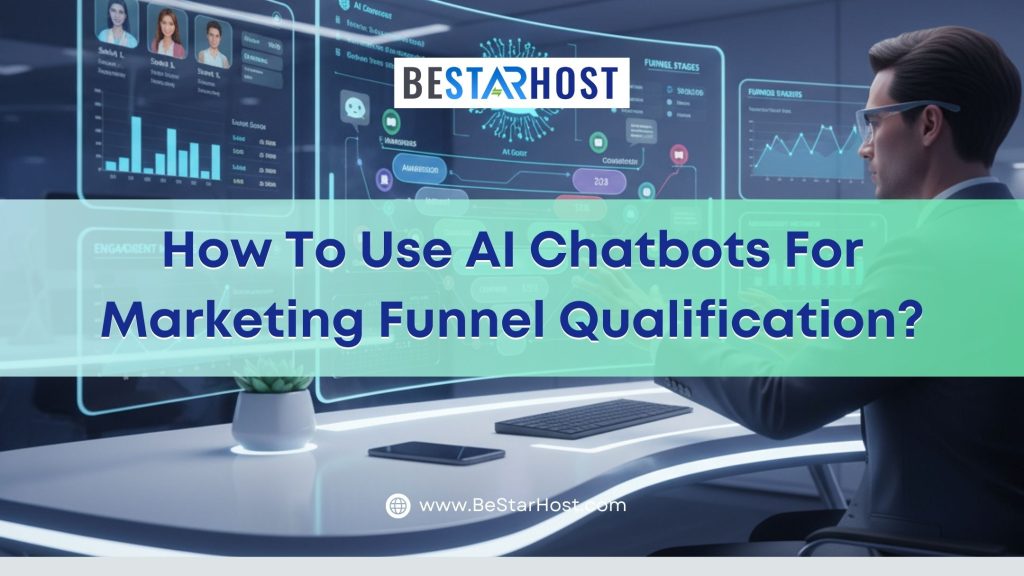 Why use AI chatbots for marketing funnel qualification?
Why use AI chatbots for marketing funnel qualification?
AI chatbots can engage visitors instantly, ask qualification questions, score leads and route the best prospects into the sales process — all without human intervention. That makes them ideal for modern, always-on marketing funnels where speed and personalization improve conversion rates. Industry guides and platform docs show chatbots deliver higher engagement and can automate initial qualification steps for marketing teams.
Step 1 — Define your qualification criteria
Before building the bot, agree what “qualified” means to your business: budget, timeline, company size, role, or product fit. Translate those criteria into short, friendly questions the bot can ask. Keep questions low-friction (multiple choice or buttons) to increase completion rates.
Step 2 — Build a conversational funnel
A high-performing chatbot funnel typically follows this flow:
- Proactive greeting or micro-offer
- Short value statement
- 2–4 qualification questions
- Real-time lead scoring
- Offer: book a demo / download content / connect to sales
Use tags or contact fields to persist answers so you can segment users automatically in your CRM. Platforms like ManyChat and HubSpot make it easy to create these flows without code. :contentReference[oaicite:12]{index=12}
Step 3 — Score leads and automate routing
Assign point values to answers (e.g., budget = high → +5, timeline = within 3 months → +3). Define a threshold to mark leads as “sales-ready.” Once a lead passes the threshold, route it automatically — create a CRM contact, send a calendar link, or post to Slack for immediate follow-up. This is the engine behind AI chatbots for lead qualification.
Step 4 — Integrations that matter
Integrate the chatbot with your CRM (HubSpot, Salesforce), booking tools (Calendly), and email platforms so qualified leads flow into existing workflows. HubSpot’s chatbot builder and ManyChat both provide native CRM integrations for frictionless handoffs. :contentReference[oaicite:13]{index=13}
Step 5 — Use AI to improve qualification quality
Modern chatbots use NLP and retrieval (RAG) to understand intent and personalize follow-ups. Where appropriate, use a hybrid approach: rule-based flows for explicit qualification and an LLM-backed assistant for complex intent detection or long-form answers. Be sure to monitor for hallucination and secure private data — recent security analyses show the need for careful prompt and data handling. :contentReference[oaicite:14]{index=14}
Step 6 — Put the chatbot where it converts
Deploy chatbots across multiple funnel touchpoints: landing pages, pricing pages, PPC landing pages, Facebook/Instagram Messenger, and WhatsApp. Each channel may need slightly different messaging, but the qualification logic should stay consistent to preserve scoring fidelity. Platforms like ManyChat support multi-channel flows and can capture leads from social DMs and web widgets. :contentReference[oaicite:15]{index=15}
Step 7 — Track, analyze & optimize
Key metrics to measure chatbot performance:
- Engagement rate (sessions with conversation)
- Completion rate (conversations finished)
- Qualified lead rate (leads meeting score threshold)
- Conversion rate (qualified → booked demo / sale)
- Response time for sales follow-up
Run A/B tests for question order, micro-copy and CTAs. Use conversation analytics to find drop-off points and rework failing steps — continuous optimization is essential for chatbot funnel optimization.
Best practices & compliance
- Keep conversations short and scannable
- Offer easy opt-out and human handover
- Limit data collection to what you need; follow privacy rules (GDPR/CCPA)
- Log consent when capturing personal contact details
- Monitor for security issues and avoid sending sensitive data to third-party LLMs without controls
Dialogflow and other vendor docs cover agent best practices and design patterns — consult platform guidance when building production bots. :contentReference[oaicite:16]{index=16}
Real-world use cases
Examples of effective bot-driven qualification:
- Complex B2B SaaS: chatbot qualifies ARR, company size and use-case before booking an enterprise demo
- Agencies: bot captures campaign objectives, monthly budget and decision timeline, then routes to account execs
- eCommerce/high-ticket retail: bot suggests products, asks purchase intent, and offers a callback for VIP shoppers
Each case reduces manual triage and speeds up time-to-first-contact.
Resources & docs
- ManyChat — automated lead qualification. :contentReference[oaicite:17]{index=17}
- HubSpot — free chatbot builder. :contentReference[oaicite:18]{index=18}
- Botpress — lead generation chatbot guide. :contentReference[oaicite:19]{index=19}
- Dialogflow — agent design & best practices. :contentReference[oaicite:20]{index=20}
- How chatbots qualify leads (guide). :contentReference[oaicite:21]{index=21}
